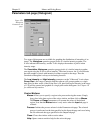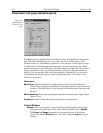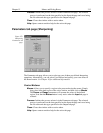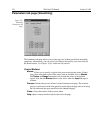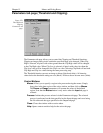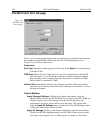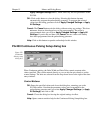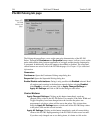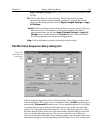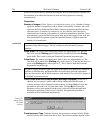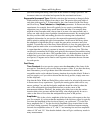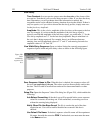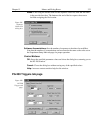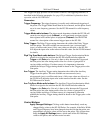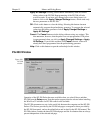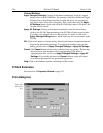
Chapter 15 Menus and Dialog Boxes 319
Apply Changed Settings
button, which sends only the new parameters to the
PG-200.
OK:
Click on this button to close the dialog. Selecting this button does
not
automatically program the pulser/timing generator. To program the selected
values into the timing generator click on
Apply Changed Settings
or
Apply
All Settings
.
Cancel:
The Cancel button exits the dialog without saving any settings. This does
not
mean, however, that the pulser was not reprogrammed. The pulser is
reprogrammed when you click on
Apply Changed Settings
or
Apply All
Settings
. If you do this and then click
Cancel
, the new values will already
have been programmed into the pulser/timing generator.
Help:
Click on this button to open the online help for this window.
PG-200 Pulse Sequence Setup dialog box
In Pulse Sequential operation, the Pulse Width and Pulse Delay change over the course
of the measurement. This sweep can be accomplished linearly (
Fixed
Increment type) or
exponentially (
Exponential
Increment type). Linear sequential operation is well suited
to locating and recovering a transient effect that always occurs at the same time with
respect to T
0
. Exponential sequential operation is used to study decay processes, where
the effect changes rapidly at the start of the measurement, and then changes slower and
slower as the measurement progresses. The sweep is controlled so as to take many
exposures in the region where the effect is changing rapidly, and fewer and fewer as the
measurement progresses and the data changes more and more slowly. The resulting data
Figure 278.
Pulse Sequence
Setup dialog
box.



